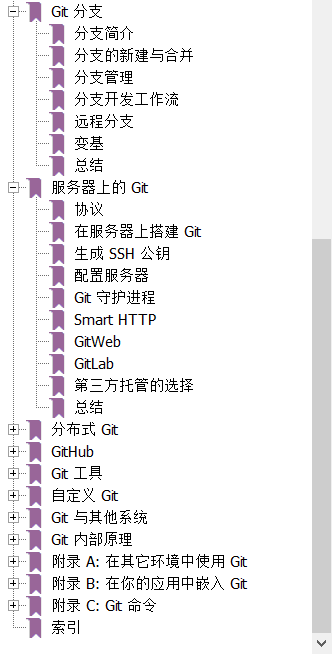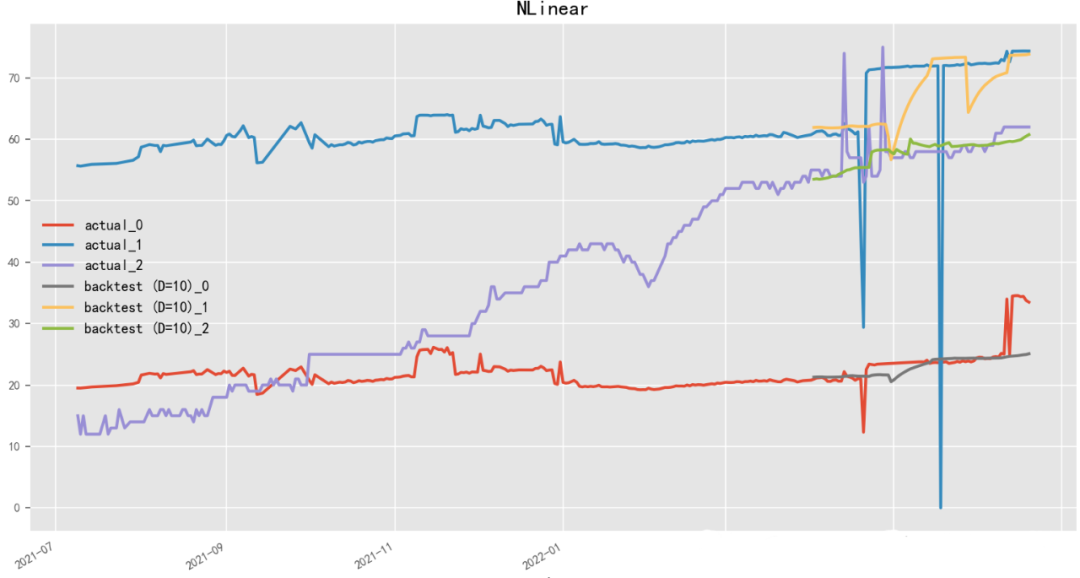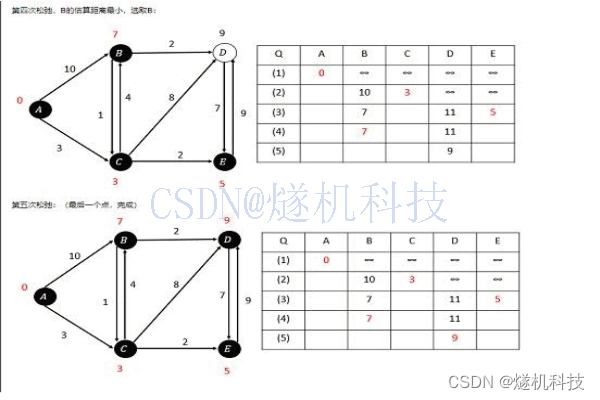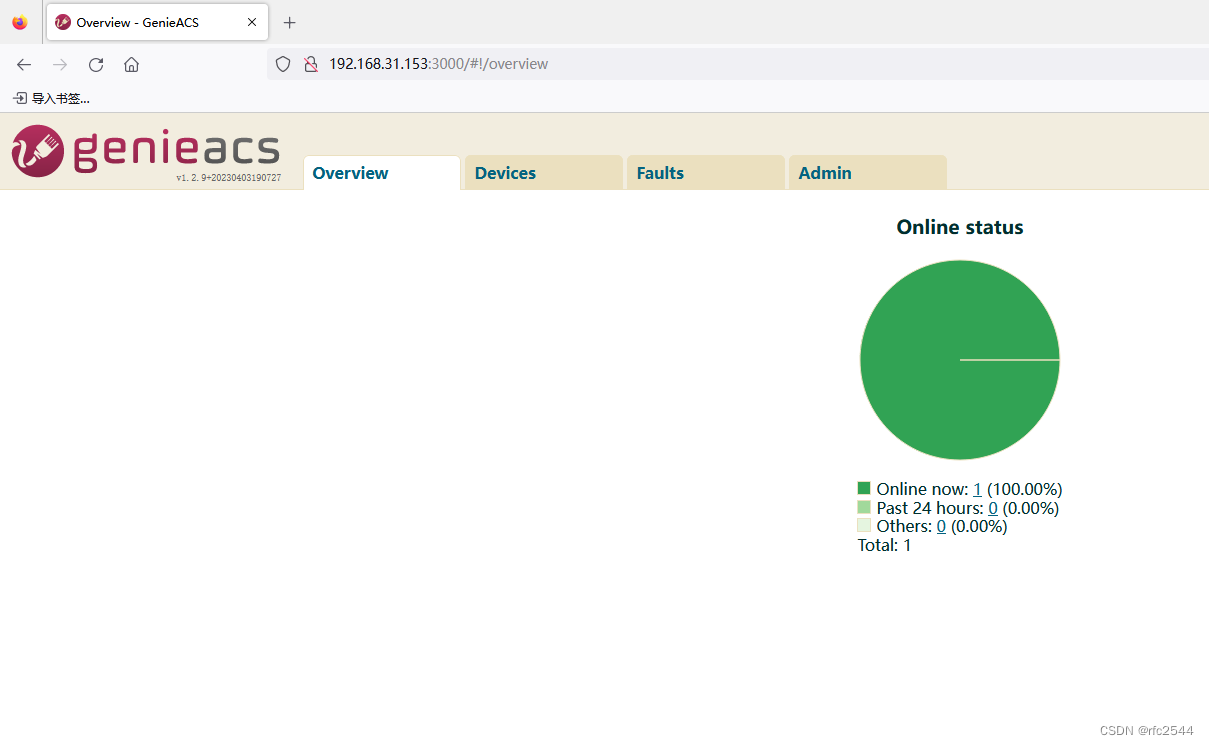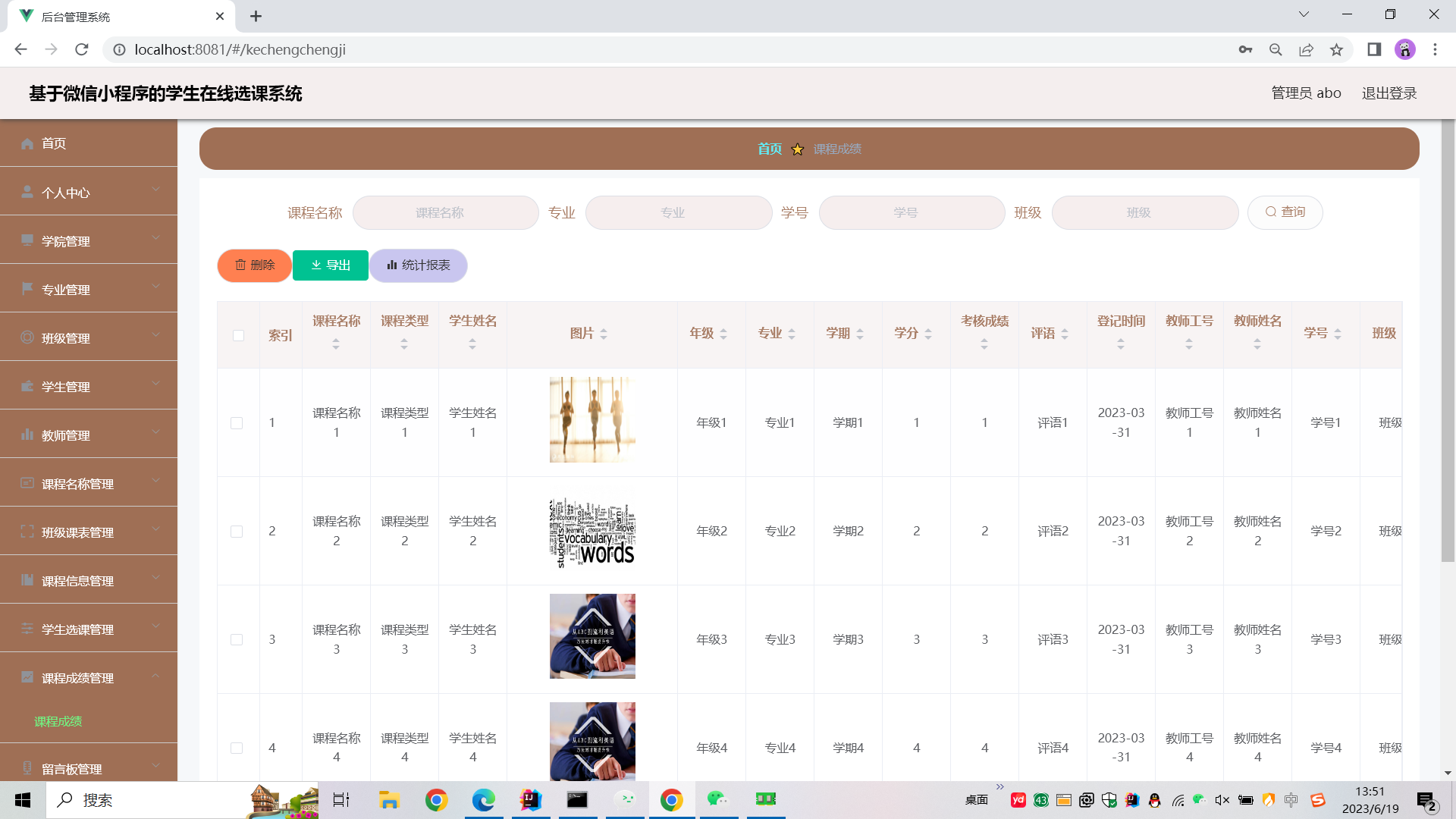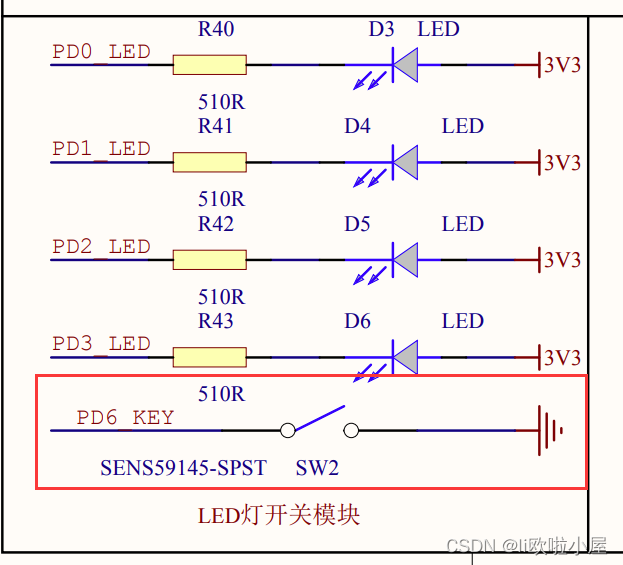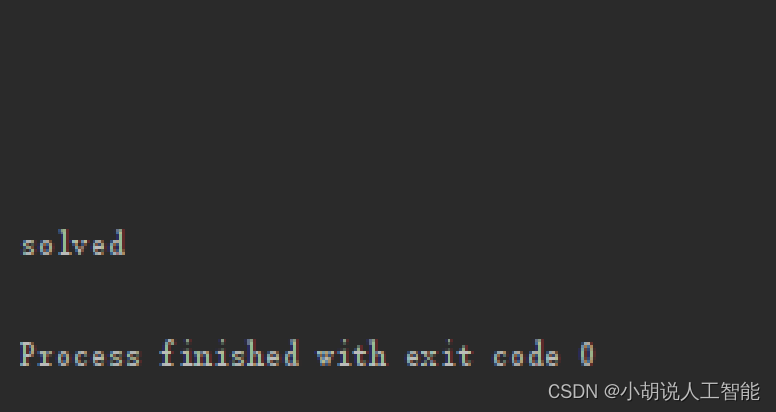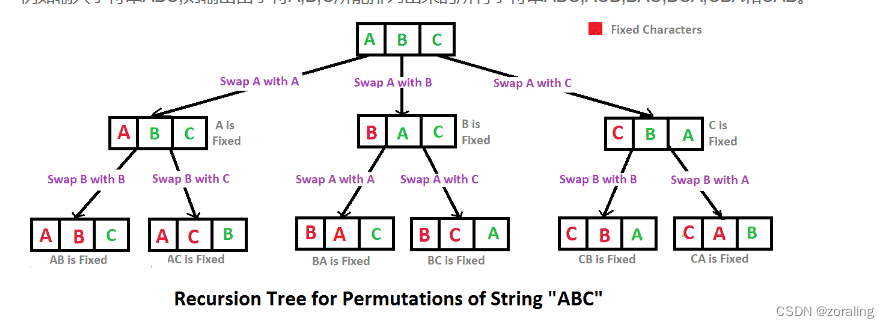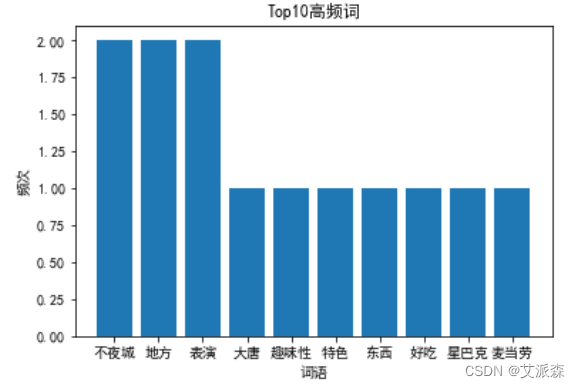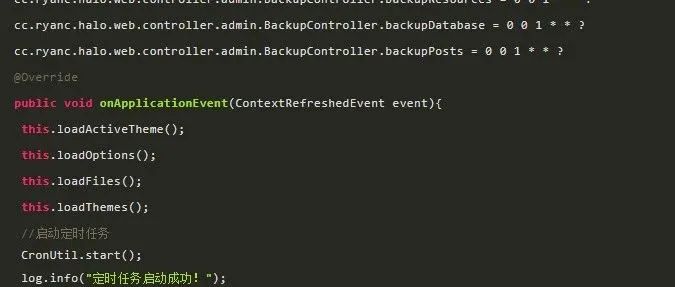文章目录
- 模板测试
- 模板函数
- 物体轮廓
- 源代码
模板测试
当片段着色器处理完一个片段之后,模板测试(Stencil Test)会开始执行,和深度测试一样,它也可能会丢弃片段。接下来,被保留的片段会进入深度测试,它可能会丢弃更多的片段。模板测试是根据又一个缓冲来进行的,它叫做模板缓冲(Stencil Buffer),我们可以在渲染的时候更新它来获得一些很有意思的效果。
一个模板缓冲中,(通常)每个模板值(Stencil Value)是8位的。所以每个像素/片段一共能有256种不同的模板值。我们可以将这些模板值设置为我们想要的值,然后当某一个片段有某一个模板值的时候,我们就可以选择丢弃或是保留这个片段了。
模板缓冲的一个简单的例子如下:

模板缓冲首先会被清除为0,之后在模板缓冲中使用1填充了一个空心矩形。场景中的片段将会只在片段的模板值为1的时候会被渲染(其它的都被丢弃了)。
模板缓冲操作允许我们在渲染片段时将模板缓冲设定为一个特定的值。通过在渲染时修改模板缓冲的内容,我们写入了模板缓冲。在同一个(或者接下来的)渲染迭代中,我们可以读取这些值,来决定丢弃还是保留某个片段。使用模板缓冲的时候你可以尽情发挥,但大体的步骤如下:
1.启用模板缓冲的写入。
2.渲染物体,更新模板缓冲的内容。
3.禁用模板缓冲的写入。
4.渲染(其它)物体,这次根据模板缓冲的内容丢弃特定的片段。
所以,通过使用模板缓冲,我们可以根据场景中已绘制的其它物体的片段,来决定是否丢弃特定的片段。
你可以启用GL_STENCIL_TEST来启用模板测试。在这一行代码之后,所有的渲染调用都会以某种方式影响着模板缓冲。
glEnable(GL_STENCIL_TEST);
注意,和颜色和深度缓冲一样,你也需要在每次迭代之前清除模板缓冲。
glClear(GL_COLOR_BUFFER_BIT | GL_DEPTH_BUFFER_BIT | GL_STENCIL_BUFFER_BIT);
和深度测试的glDepthMask函数一样,模板缓冲也有一个类似的函数。glStencilMask允许我们设置一个位掩码(Bitmask),它会与将要写入缓冲的模板值进行与(AND)运算。默认情况下设置的位掩码所有位都为1,不影响输出,但如果我们将它设置为0x00,写入缓冲的所有模板值最后都会变成0.这与深度测试中的glDepthMask(GL_FALSE)是等价的。
glStencilMask(0xFF); // 每一位写入模板缓冲时都保持原样
glStencilMask(0x00); // 每一位在写入模板缓冲时都会变成0(禁用写入)
大部分情况下你都只会使用0x00或者0xFF作为模板掩码(Stencil Mask),但是知道有选项可以设置自定义的位掩码总是好的。
模板函数
和深度测试一样,我们对模板缓冲应该通过还是失败,以及它应该如何影响模板缓冲,也是有一定控制的。一共有两个函数能够用来配置模板测试:glStencilFunc和glStencilOp。
glStencilFunc(GLenum func, GLint ref, GLuint mask)一共包含三个参数:
func:设置模板测试函数(Stencil Test Function)。这个测试函数将会应用到已储存的模板值上和glStencilFunc函数的ref值上。可用的选项有:GL_NEVER、GL_LESS、GL_LEQUAL、GL_GREATER、GL_GEQUAL、GL_EQUAL、GL_NOTEQUAL和GL_ALWAYS。它们的语义和深度缓冲的函数类似。
ref:设置了模板测试的参考值(Reference Value)。模板缓冲的内容将会与这个值进行比较。
mask:设置一个掩码,它将会与参考值和储存的模板值在测试比较它们之前进行与(AND)运算。初始情况下所有位都为1。
在一开始的那个简单的模板例子中,函数被设置为:
glStencilFunc(GL_EQUAL, 1, 0xFF)
这会告诉OpenGL,只要一个片段的模板值等于(GL_EQUAL)参考值1,片段将会通过测试并被绘制,否则会被丢弃。
但是glStencilFunc仅仅描述了OpenGL应该对模板缓冲内容做什么,而不是我们应该如何更新缓冲。这就需要glStencilOp这个函数了。
glStencilOp(GLenum sfail, GLenum dpfail, GLenum dppass)一共包含三个选项,我们能够设定每个选项应该采取的行为:
sfail:模板测试失败时采取的行为。
dpfail:模板测试通过,但深度测试失败时采取的行为。
dppass:模板测试和深度测试都通过时采取的行为。
每个选项都可以选用以下的其中一种行为:
| 行为 | 描述 |
|---|---|
| GL_KEEP | 保持当前储存的模板值 |
| GL_ZERO | 将模板值设置为0 |
| GL_REPLACE | 将模板值设置为glStencilFunc函数设置的ref值 |
| GL_INCR | 如果模板值小于最大值则将模板值加1 |
| GL_INCR_WRAP | 与GL_INCR一样,但如果模板值超过了最大值则归零 |
| GL_DECR | 如果模板值大于最小值则将模板值减1 |
| GL_DECR_WRAP | 与GL_DECR一样,但如果模板值小于0则将其设置为最大值 |
| GL_INVERT | 按位翻转当前的模板缓冲值 |
| 默认情况下glStencilOp是设置为(GL_KEEP, GL_KEEP, GL_KEEP)的,所以不论任何测试的结果是如何,模板缓冲都会保留它的值。默认的行为不会更新模板缓冲,所以如果你想写入模板缓冲的话,你需要至少对其中一个选项设置不同的值。 | |
| 所以,通过使用glStencilFunc和glStencilOp,我们可以精确地指定更新模板缓冲的时机与行为了,我们也可以指定什么时候该让模板缓冲通过,即什么时候片段需要被丢弃。 |
物体轮廓
仅仅看了前面的部分你还是不太可能能够完全理解模板测试的工作原理,所以我们将会展示一个使用模板测试就可以完成的有用特性,它叫做物体轮廓(Object Outlining)。
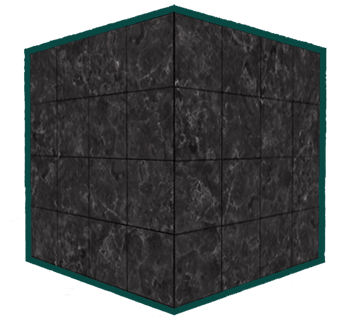
物体轮廓所能做的事情正如它名字所描述的那样。我们将会为每个(或者一个)物体在它的周围创建一个很小的有色边框。当你想要在策略游戏中选中一个单位进行操作的,想要告诉玩家选中的是哪个单位的时候,这个效果就非常有用了。为物体创建轮廓的步骤如下:
1.在绘制(需要添加轮廓的)物体之前,将模板函数设置为GL_ALWAYS,每当物体的片段被渲染时,将模板缓冲更新为1。
2.渲染物体。
3.禁用模板写入以及深度测试。
4.将每个物体缩放一点点。
5.使用一个不同的片段着色器,输出一个单独的(边框)颜色。
6.再次绘制物体,但只在它们片段的模板值不等于1时才绘制。
7.再次启用模板写入和深度测试。
源代码
main.cpp
#include <glad/glad.h>
#include <GLFW/glfw3.h>
#include <iostream>
#include <cmath>
#include "../shader.h"
#include "../camera.h"
#include <glm/glm.hpp>
#include <glm/gtc/matrix_transform.hpp>
#include <glm/gtc/type_ptr.hpp>
#include "../model.h"
void framebuffer_size_callback(GLFWwindow* window, int width, int height);
void mouse_callback(GLFWwindow* window, double xpos, double ypos);
void scroll_callback(GLFWwindow* window, double xoffset, double yoffset);
void processInput(GLFWwindow* window);
unsigned int loadTexture(const char* path);
void mouseClick_callback(GLFWwindow* window, int button, int action, int mods);
glm::vec3 worldPosFromViewPort(int winX, int winY);
// settings
const unsigned int SCR_WIDTH = 800;
const unsigned int SCR_HEIGHT = 600;
float _near = 0.1, _far = 100;
// camera
Camera camera(glm::vec3(0.0f, 0.0f, 8.0f));
float lastX = (float)SCR_WIDTH / 2.0;
float lastY = (float)SCR_HEIGHT / 2.0;
bool firstMouse = true;
// timing
float deltaTime = 0.0f;
float lastFrame = 0.0f;
glm::mat4 view;
glm::mat4 projection;
bool LeftButtonHolding = false;
bool RightButtonHolding = false;
struct ModelInfo {
Model* model;
glm::vec3 worldPos;
float pitch;
float yaw;
float roll;
bool isSelected;
string name;
};
map<string, ModelInfo> _Models;
int main()
{
// glfw: initialize and configure
// ------------------------------
glfwInit();
glfwWindowHint(GLFW_CONTEXT_VERSION_MAJOR, 3);
glfwWindowHint(GLFW_CONTEXT_VERSION_MINOR, 3);
glfwWindowHint(GLFW_OPENGL_PROFILE, GLFW_OPENGL_CORE_PROFILE);
#ifdef __APPLE__
glfwWindowHint(GLFW_OPENGL_FORWARD_COMPAT, GL_TRUE);
#endif
// glfw window creation
// --------------------
GLFWwindow* window = glfwCreateWindow(SCR_WIDTH, SCR_HEIGHT, "LearnOpenGL", NULL, NULL);
if (window == NULL)
{
std::cout << "Failed to create GLFW window" << std::endl;
glfwTerminate();
return -1;
}
glfwMakeContextCurrent(window);
glfwSetFramebufferSizeCallback(window, framebuffer_size_callback);
glfwSetCursorPosCallback(window, mouse_callback);
glfwSetScrollCallback(window, scroll_callback);
glfwSetMouseButtonCallback(window, mouseClick_callback);
// tell GLFW to capture our mouse
//glfwSetInputMode(window, GLFW_CURSOR, GLFW_CURSOR_DISABLED);
// glad: load all OpenGL function pointers
// ---------------------------------------
if (!gladLoadGLLoader((GLADloadproc)glfwGetProcAddress))
{
std::cout << "Failed to initialize GLAD" << std::endl;
return -1;
}
// configure global opengl state
// -----------------------------
glEnable(GL_DEPTH_TEST);
glDepthFunc(GL_LESS); // always pass the depth test (same effect as glDisable(GL_DEPTH_TEST))
// build and compile shaders
// -------------------------
Shader shader("shaders/shader.vs", "shaders/shader.fs");
Shader shaderSingleColor("shaders/shader.vs", "shaders/shaderSingleColor.fs");
// set up vertex data (and buffer(s)) and configure vertex attributes
// ------------------------------------------------------------------
float cubeVertices[] = {
// positions // texture Coords
-0.5f, -0.5f, -0.5f, 0.0f, 0.0f,
0.5f, -0.5f, -0.5f, 1.0f, 0.0f,
0.5f, 0.5f, -0.5f, 1.0f, 1.0f,
0.5f, 0.5f, -0.5f, 1.0f, 1.0f,
-0.5f, 0.5f, -0.5f, 0.0f, 1.0f,
-0.5f, -0.5f, -0.5f, 0.0f, 0.0f,
-0.5f, -0.5f, 0.5f, 0.0f, 0.0f,
0.5f, -0.5f, 0.5f, 1.0f, 0.0f,
0.5f, 0.5f, 0.5f, 1.0f, 1.0f,
0.5f, 0.5f, 0.5f, 1.0f, 1.0f,
-0.5f, 0.5f, 0.5f, 0.0f, 1.0f,
-0.5f, -0.5f, 0.5f, 0.0f, 0.0f,
-0.5f, 0.5f, 0.5f, 1.0f, 0.0f,
-0.5f, 0.5f, -0.5f, 1.0f, 1.0f,
-0.5f, -0.5f, -0.5f, 0.0f, 1.0f,
-0.5f, -0.5f, -0.5f, 0.0f, 1.0f,
-0.5f, -0.5f, 0.5f, 0.0f, 0.0f,
-0.5f, 0.5f, 0.5f, 1.0f, 0.0f,
0.5f, 0.5f, 0.5f, 1.0f, 0.0f,
0.5f, 0.5f, -0.5f, 1.0f, 1.0f,
0.5f, -0.5f, -0.5f, 0.0f, 1.0f,
0.5f, -0.5f, -0.5f, 0.0f, 1.0f,
0.5f, -0.5f, 0.5f, 0.0f, 0.0f,
0.5f, 0.5f, 0.5f, 1.0f, 0.0f,
-0.5f, -0.5f, -0.5f, 0.0f, 1.0f,
0.5f, -0.5f, -0.5f, 1.0f, 1.0f,
0.5f, -0.5f, 0.5f, 1.0f, 0.0f,
0.5f, -0.5f, 0.5f, 1.0f, 0.0f,
-0.5f, -0.5f, 0.5f, 0.0f, 0.0f,
-0.5f, -0.5f, -0.5f, 0.0f, 1.0f,
-0.5f, 0.5f, -0.5f, 0.0f, 1.0f,
0.5f, 0.5f, -0.5f, 1.0f, 1.0f,
0.5f, 0.5f, 0.5f, 1.0f, 0.0f,
0.5f, 0.5f, 0.5f, 1.0f, 0.0f,
-0.5f, 0.5f, 0.5f, 0.0f, 0.0f,
-0.5f, 0.5f, -0.5f, 0.0f, 1.0f
};
float planeVertices[] = {
// positions // texture Coords (note we set these higher than 1 (together with GL_REPEAT as texture wrapping mode). this will cause the floor texture to repeat)
5.0f, -0.5f, 5.0f, 2.0f, 0.0f,
-5.0f, -0.5f, 5.0f, 0.0f, 0.0f,
-5.0f, -0.5f, -5.0f, 0.0f, 2.0f,
5.0f, -0.5f, 5.0f, 2.0f, 0.0f,
-5.0f, -0.5f, -5.0f, 0.0f, 2.0f,
5.0f, -0.5f, -5.0f, 2.0f, 2.0f
};
// cube VAO
unsigned int cubeVAO, cubeVBO;
glGenVertexArrays(1, &cubeVAO);
glGenBuffers(1, &cubeVBO);
glBindVertexArray(cubeVAO);
glBindBuffer(GL_ARRAY_BUFFER, cubeVBO);
glBufferData(GL_ARRAY_BUFFER, sizeof(cubeVertices), &cubeVertices, GL_STATIC_DRAW);
glEnableVertexAttribArray(0);
glVertexAttribPointer(0, 3, GL_FLOAT, GL_FALSE, 5 * sizeof(float), (void*)0);
glEnableVertexAttribArray(1);
glVertexAttribPointer(1, 2, GL_FLOAT, GL_FALSE, 5 * sizeof(float), (void*)(3 * sizeof(float)));
glBindVertexArray(0);
// plane VAO
unsigned int planeVAO, planeVBO;
glGenVertexArrays(1, &planeVAO);
glGenBuffers(1, &planeVBO);
glBindVertexArray(planeVAO);
glBindBuffer(GL_ARRAY_BUFFER, planeVBO);
glBufferData(GL_ARRAY_BUFFER, sizeof(planeVertices), &planeVertices, GL_STATIC_DRAW);
glEnableVertexAttribArray(0);
glVertexAttribPointer(0, 3, GL_FLOAT, GL_FALSE, 5 * sizeof(float), (void*)0);
glEnableVertexAttribArray(1);
glVertexAttribPointer(1, 2, GL_FLOAT, GL_FALSE, 5 * sizeof(float), (void*)(3 * sizeof(float)));
glBindVertexArray(0);
// load textures
// -------------
unsigned int cubeTexture = loadTexture("../resources/container2.png");
unsigned int floorTexture = loadTexture("../resources/rock.jpg");
// shader configuration
// --------------------
shader.use();
shader.setInt("texture1", 0);
Model Zhang3 = Model("../resources/backpack/backpack.obj");
_Models["zhang3"] = ModelInfo{ &Zhang3,glm::vec3(-3,0,0),0.0,0.0,0.0,false,"Zhang3" };
Model Li4 = Model("../resources/backpack/backpack.obj");
_Models["Li4"] = ModelInfo{ &Li4,glm::vec3(3,0,0),0.0,0.0,0.0,false,"Li4" };
// render loop
// -----------
while (!glfwWindowShouldClose(window))
{
// per-frame time logic
// --------------------
float currentFrame = static_cast<float>(glfwGetTime());
deltaTime = currentFrame - lastFrame;
lastFrame = currentFrame;
// input
// -----
processInput(window);
// render
// ------
glClearColor(0.1f, 0.1f, 0.1f, 1.0f);
glClear(GL_COLOR_BUFFER_BIT | GL_DEPTH_BUFFER_BIT);
shader.use();
glm::mat4 model = glm::mat4(1.0f);
view = camera.GetViewMatrix();
projection = glm::perspective(glm::radians(camera.Zoom), (float)SCR_WIDTH / (float)SCR_HEIGHT, 0.1f, 100.0f);
shader.setMat4("view", view);
shader.setMat4("projection", projection);
shaderSingleColor.use();
shaderSingleColor.setMat4("view", view);
shaderSingleColor.setMat4("projection", projection);
//开启深度测试把所有值设为1
glEnable(GL_STENCIL_TEST);
glStencilOp(GL_KEEP, GL_KEEP, GL_REPLACE);
glClear(GL_COLOR_BUFFER_BIT | GL_DEPTH_BUFFER_BIT | GL_STENCIL_BUFFER_BIT);
glStencilFunc(GL_ALWAYS, 1, 0xFF);
glStencilMask(0xFF);
//model
map<string, ModelInfo>::iterator _modelsIter;
for (_modelsIter = _Models.begin(); _modelsIter != _Models.end(); _modelsIter++)
{
model = glm::mat4(1.0f);
model = glm::translate(model, _modelsIter->second.worldPos);
model = glm::rotate(model, _modelsIter->second.pitch, glm::vec3(1.0f, 0.0f, 0.0f));
model = glm::rotate(model, _modelsIter->second.yaw, glm::vec3(0.0f, 1.0f, 0.0f));
model = glm::rotate(model, _modelsIter->second.roll, glm::vec3(0.0f, 0.0f, 1.0f));
shader.use();
shader.setMat4("model", model);
_modelsIter->second.model->Draw(shader);
if (_modelsIter->second.isSelected)
{
glStencilFunc(GL_NOTEQUAL, 1, 0xFF);
glStencilMask(0x00);
shaderSingleColor.use();
model = glm::scale(model, glm::vec3(1.1f));
shaderSingleColor.setMat4("model", model);
_modelsIter->second.model->Draw(shaderSingleColor);
}
glStencilFunc(GL_ALWAYS, 1, 0xFF);
glStencilMask(0xFF);
}
// floor
shader.use();
glBindVertexArray(planeVAO);
glBindTexture(GL_TEXTURE_2D, floorTexture);
shader.setMat4("model", glm::mat4(1.0f));
glDrawArrays(GL_TRIANGLES, 0, 6);
glBindVertexArray(0);
// glfw: swap buffers and poll IO events (keys pressed/released, mouse moved etc.)
// -------------------------------------------------------------------------------
glfwSwapBuffers(window);
glfwPollEvents();
}
// optional: de-allocate all resources once they've outlived their purpose:
// ------------------------------------------------------------------------
glDeleteVertexArrays(1, &cubeVAO);
glDeleteVertexArrays(1, &planeVAO);
glDeleteBuffers(1, &cubeVBO);
glDeleteBuffers(1, &planeVBO);
glfwTerminate();
return 0;
}
// process all input: query GLFW whether relevant keys are pressed/released this frame and react accordingly
// ---------------------------------------------------------------------------------------------------------
void processInput(GLFWwindow* window)
{
if (glfwGetKey(window, GLFW_KEY_ESCAPE) == GLFW_PRESS)
glfwSetWindowShouldClose(window, true);
if (glfwGetKey(window, GLFW_KEY_W) == GLFW_PRESS)
camera.ProcessKeyboard(FORWARD, deltaTime);
if (glfwGetKey(window, GLFW_KEY_S) == GLFW_PRESS)
camera.ProcessKeyboard(BACKWARD, deltaTime);
if (glfwGetKey(window, GLFW_KEY_A) == GLFW_PRESS)
camera.ProcessKeyboard(LEFT, deltaTime);
if (glfwGetKey(window, GLFW_KEY_D) == GLFW_PRESS)
camera.ProcessKeyboard(RIGHT, deltaTime);
if (glfwGetKey(window, GLFW_KEY_LEFT_CONTROL) == GLFW_PRESS)
{
for (map<string, ModelInfo>::iterator _modelsIter = _Models.begin(); _modelsIter != _Models.end(); _modelsIter++)
{
if (_modelsIter->second.isSelected) {
_modelsIter->second.yaw += 0.1 * deltaTime;
break;
}
}
}
}
// glfw: whenever the window size changed (by OS or user resize) this callback function executes
// ---------------------------------------------------------------------------------------------
void framebuffer_size_callback(GLFWwindow* window, int width, int height)
{
// make sure the viewport matches the new window dimensions; note that width and
// height will be significantly larger than specified on retina displays.
glViewport(0, 0, width, height);
}
// glfw: whenever the mouse scroll wheel scrolls, this callback is called
// ----------------------------------------------------------------------
void scroll_callback(GLFWwindow* window, double xoffset, double yoffset)
{
camera.ProcessMouseScroll(static_cast<float>(yoffset));
}
// utility function for loading a 2D texture from file
// ---------------------------------------------------
unsigned int loadTexture(char const* path)
{
unsigned int textureID;
glGenTextures(1, &textureID);
int width, height, nrComponents;
unsigned char* data = stbi_load(path, &width, &height, &nrComponents, 0);
if (data)
{
GLenum format;
if (nrComponents == 1)
format = GL_RED;
else if (nrComponents == 3)
format = GL_RGB;
else if (nrComponents == 4)
format = GL_RGBA;
glBindTexture(GL_TEXTURE_2D, textureID);
glTexImage2D(GL_TEXTURE_2D, 0, format, width, height, 0, format, GL_UNSIGNED_BYTE, data);
glGenerateMipmap(GL_TEXTURE_2D);
glTexParameteri(GL_TEXTURE_2D, GL_TEXTURE_WRAP_S, GL_REPEAT);
glTexParameteri(GL_TEXTURE_2D, GL_TEXTURE_WRAP_T, GL_REPEAT);
glTexParameteri(GL_TEXTURE_2D, GL_TEXTURE_MIN_FILTER, GL_LINEAR_MIPMAP_LINEAR);
glTexParameteri(GL_TEXTURE_2D, GL_TEXTURE_MAG_FILTER, GL_LINEAR);
stbi_image_free(data);
}
else
{
std::cout << "Texture failed to load at path: " << path << std::endl;
stbi_image_free(data);
}
return textureID;
}
// glfw: whenever the mouse moves, this callback is called
// -------------------------------------------------------
void mouse_callback(GLFWwindow* window, double xposIn, double yposIn)
{
if (LeftButtonHolding) {
float xpos = static_cast<float>(xposIn);
float ypos = static_cast<float>(yposIn);
float xoffset = xpos - lastX;
float yoffset = lastY - ypos; // reversed since y-coordinates go from bottom to top
lastX = xpos;
lastY = ypos;
camera.ProcessMouseMovement(xoffset, yoffset);
}
if (RightButtonHolding) {
for (map<string, ModelInfo>::iterator _modelsIter = _Models.begin(); _modelsIter != _Models.end(); _modelsIter++)
{
if (_modelsIter->second.isSelected) {
_modelsIter->second.worldPos = worldPosFromViewPort((int)xposIn, (int)yposIn);
break;
}
}
}
}
void mouseClick_callback(GLFWwindow* window, int button, int action, int mods) {
double winX, winY;
glfwGetCursorPos(window, &winX, &winY);
if ((action == GLFW_PRESS) && (button == GLFW_MOUSE_BUTTON_LEFT))
{
lastX = (float)winX;
lastY = (float)winY;
LeftButtonHolding = true; //只有按下鼠标右键时,才会改变摄像机角度
}
else
LeftButtonHolding = false;
if ((action == GLFW_PRESS) && (button == GLFW_MOUSE_BUTTON_RIGHT)) {
RightButtonHolding = true;
glm::vec3 wolrdPostion = worldPosFromViewPort((int)winX, (int)winY);
for (map<string, ModelInfo>::iterator _modelsIter = _Models.begin(); _modelsIter != _Models.end(); _modelsIter++)
{
float _distance = glm::distance(_modelsIter->second.worldPos, glm::vec3(wolrdPostion));
if (_distance < 2.5) {
cout << _modelsIter->first << "模型被选中..." << endl;
_modelsIter->second.isSelected = true;
//break;
}
else
_modelsIter->second.isSelected = false;
}
}
else
RightButtonHolding = false;
}
glm::vec3 worldPosFromViewPort(int winX, int winY) {
float winZ;
glReadPixels(
winX,
(int)SCR_HEIGHT - winY
, 1, 1
, GL_DEPTH_COMPONENT, GL_FLOAT
, &winZ);
float x = (2.0f * (float)winX) / SCR_WIDTH - 1.0f;
float y = 1.0f - (2.0f * (float)winY) / SCR_HEIGHT;
float z = winZ * 2.0f - 1.0f;
//有像素被点中
//float w = (2.0 * _near * _far) / (_far + _near - z * (_far - _near));
float w = _near * _far / (_near * winZ - _far * winZ + _far);
glm::vec4 wolrdPostion(x, y, z, 1);
wolrdPostion *= w;
wolrdPostion = glm::inverse(view) * glm::inverse(projection) * wolrdPostion;
return wolrdPostion;
}
shader.vs
#version 330 core
layout (location = 0) in vec3 aPos;
layout (location = 1) in vec2 aTexCoords;
out vec2 TexCoords;
uniform mat4 model;
uniform mat4 view;
uniform mat4 projection;
void main()
{
TexCoords = aTexCoords;
gl_Position = projection * view * model * vec4(aPos, 1.0);
}
shader.fs
#version 330 core
out vec4 FragColor;
float near = 0.1;
float far = 100.0;
float LinearizeDepth(float depth) {
float z_ndc = depth * 2.0 - 1.0; // back to NDC
return (2.0 * near * far) / (far + near - z_ndc * (far - near));
}
in vec2 TexCoords;
uniform sampler2D texture1;
void main() {
//float depth = LinearizeDepth(gl_FragCoord.z) / far; // divide by far for demonstration
//FragColor = vec4(vec3(depth), 1.0);
FragColor = texture(texture1,TexCoords);
}
shaderSingleColor.fs
#version 330 core
out vec4 FragColor;
void main()
{
FragColor = vec4(1.0, 1.0, 0.26, 1.0);
}
最后的效果,右键点击物体有个黄色的轮廓。

参考链接
